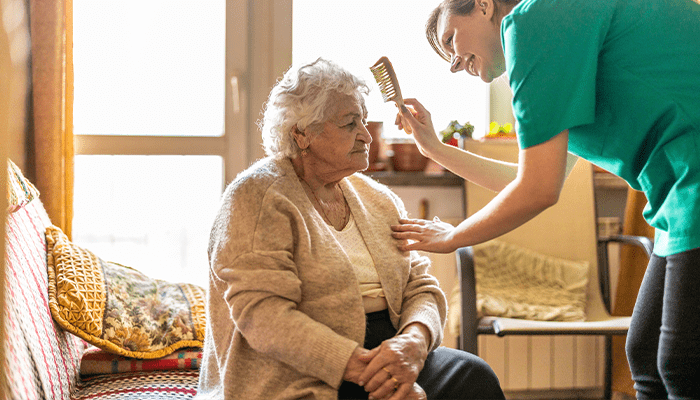Utilization of motorized wheelchairs or scooters is becoming increasingly prevalent in many senior health care facilities. These devices dramatically improve the quality of life for people who might otherwise be dependent on others for mobility; however, with benefits come risk. Such risks include potential personal harm or property damage.
To minimize damage to the facility’s property, consider the application of door guards on all resident room doors, mount wide-angle mirrors for sharp corners in the facility, protect all areas under the handrail and provide extra protection on corners and door frames.
In order to provide a safe living environment, the resident’s rights, privileges and obligations for the use of motorized vehicles should be clearly outlined in the resident handbook. Consider and determine consider the following when developing your facility’s rules and regulations:
- Who is eligible to use the motorized vehicle
- The person’s motorized vehicle operating competency. The operating competency should be performed upon admission, annually and with a change in condition.
- The person’s need for liability insurance
- Traffic rules such as speed limits, yielding to pedestrians, stopping at hallway intersections, etc.
- Designated and restricted areas for motorized vehicle parking and storage
- The responsibility of charging and maintaining the motorized vehicle
- Monitor and document the resident’s use of the motorized vehicle
- Facility response to the abuse of the motorized vehicle privileges
- Seek legal counsel to determine responsibility for damage to property, self or others
With careful development and implementation of a policy on motorized wheelchairs and scooters, the benefits can outweigh the risks. The AssuredPartners Senior Living Risk Solutions experts can help you review your facility’s policies and procedures to help provide the highest quality senior care while protecting your organization. Visit AssuredPartners Senior Living Risk Solutions to learn more.



